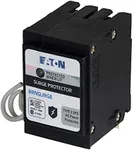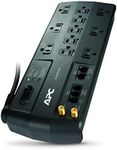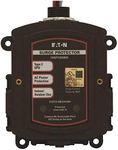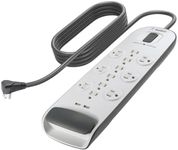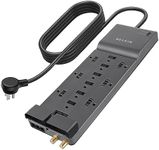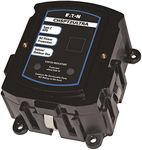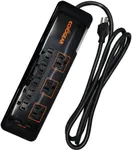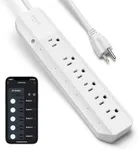Buying Guide for the Best Network Surge Protectors
When it comes to protecting your electronic devices from power surges, a network surge protector is an essential tool. These devices help to safeguard your valuable equipment from unexpected spikes in voltage, which can cause significant damage. Choosing the right network surge protector involves understanding several key specifications and how they align with your needs. Here’s a guide to help you make an informed decision.Joules RatingThe joules rating indicates the amount of energy a surge protector can absorb before it fails. This is important because a higher joules rating means better protection for your devices. Typically, surge protectors range from 200 to over 4000 joules. For basic protection, a rating of 600-1000 joules is sufficient. For more sensitive or expensive equipment, look for a rating of 2000 joules or higher. Consider the value and sensitivity of the devices you are protecting to determine the appropriate joules rating.
Clamping VoltageClamping voltage is the voltage level at which the surge protector will start to divert excess electricity away from your devices. This is crucial because a lower clamping voltage means the protector will activate sooner, providing better protection. Common clamping voltages are 330V, 400V, and 500V. For most home and office electronics, a clamping voltage of 330V is ideal. If you have particularly sensitive equipment, opt for the lowest clamping voltage available.
Response TimeResponse time refers to how quickly the surge protector reacts to a power surge. A faster response time means your devices are protected more quickly. This is important because even a slight delay can result in damage. Most surge protectors have a response time of less than 1 nanosecond. For optimal protection, look for a surge protector with a response time of 1 nanosecond or faster. This ensures that your devices are shielded almost instantaneously from any power surges.
Number of OutletsThe number of outlets on a surge protector determines how many devices you can connect to it. This is important because it allows you to protect multiple devices simultaneously. Surge protectors typically offer between 4 to 12 outlets. Consider the number of devices you need to protect and choose a surge protector with enough outlets to accommodate them. If you have a lot of devices, look for a model with more outlets to avoid the need for multiple surge protectors.
Network ProtectionNetwork protection refers to the surge protector's ability to safeguard your network connections, such as Ethernet or coaxial cables. This is important because power surges can also travel through these connections and damage your network equipment. Look for surge protectors that offer network protection if you have devices connected to the internet or a local network. This feature is particularly useful for protecting routers, modems, and other networked devices.
Indicator LightsIndicator lights on a surge protector show the status of the protection and grounding. This is important because it allows you to see at a glance whether the surge protector is functioning correctly. Most surge protectors have lights that indicate 'Protected' and 'Grounded' status. Choose a surge protector with clear and easy-to-read indicator lights to ensure you can quickly verify that your devices are protected and the unit is properly grounded.
Warranty and Equipment Protection PolicyThe warranty and equipment protection policy provide assurance that the manufacturer stands behind their product. This is important because it offers peace of mind and financial protection in case the surge protector fails. Warranties typically range from 1 to 5 years, and some surge protectors come with an equipment protection policy that covers connected devices up to a certain amount. Look for a surge protector with a comprehensive warranty and a generous equipment protection policy to ensure you are covered in the event of a failure.
